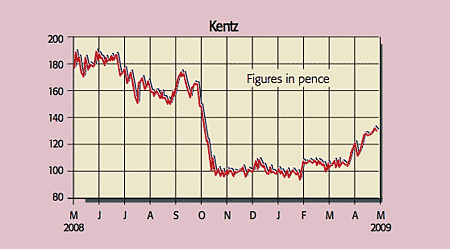
Winter has come late this year for industry. With ship owners mothballing vessels and domestic planes being grounded, companies across the economy are being forced to go into hibernation just as the summer months approach.
The oil industry is doing the same. With oil languishing around $50 a barrel, it no longer makes sense to drag mega-tonne machinery through the Canadian tar sands or sink new drills in the farthest reaches of the ocean. The colossal deepwater drills that were being rented out at $500,000 a day last year are now standing idle.
And just as cranes have disappeared from city skylines, the Mid Western plains are no longer filled with land rigs. In the US, rig counts have declined roughly 50% from their September 2008 peak levels. They’re down 8%-10% elsewhere. Faced with falling revenues, big oil is trying hard to push some of that pain on to its suppliers in the oil services industry, driving down the cost of renting rigs and refining their oil.
Yet a degree of optimism has crept into the industry in recent weeks. When oil services group Schlumberger reported a 30% drop in profits this week – a little better than Wall Street was expecting – investors sent the shares 7% higher. “This is a big bullish sign for oil services,” said the Daily Crux.
With the oil price down 70% since the $145 peak last year, the feeling is that oil services companies have priced in all the misery that they can expect in the gloomy years ahead. Now it’s time to get in on the oil rebound before oil cartel Opec slashes supplies again and drives oil back above $70, it argues.
The trouble is, this all smacks of the same sort of reasoning that has helped bank shares lead the bear market rally we’ve witnessed recently. Just as banking bulls argue that life can’t get any harder for financials, so commodity bulls reckon oil stocks are pricing in the worst. But the worst is yet to come.
Huge spare capacity is opening up in the global economy. Cars, airlines, chemicals – a vast swath of industry has lost its appetite for oil. US crude inventories are now at their highest level since September 1990. Part of the build up in global inventories is down to stockpiling of strategic oil reserves. But spare capacity among oil refiners is also ballooning. Merrill Lynch estimates that usage rates are down to 81% from 84% last year. Anyone talking about green shoots in the economy feeding a recovery in oil prices isn’t paying attention to the supply-demand imbalance in the industry.
All told, spending on oil and gas may drop 12% worldwide this year, says Barclays Capital Research. Shallow water drills tied to short-term contracts and the spot price of oil are likely to be decommissioned. Even deepwater drillers, who have managed to lock big oil groups into long contracts, aren’t immune. Michael Rodgers of PFC Energy told Bloomberg that of a sample of 46 deepwater projects across the major oceans, about 27 are running on an internal rate of return of less than 15%, the minimum needed for big oil to invest in deepwater developments. Contracts are being cancelled or renegotiated as clients run low on cash.
But it’s not all bad news for oil services. With pipelines rusting and oil-refining equipment falling into disrepair, the Gulf States are being forced to undertake an overhaul of their energy infrastructure. Libya has just began construction on a $5bn energy hub, a five-year project to support its plans to double crude production by 2012. That’s good for one engineer at the heart of the Gulf’s energy build out – see below.
The best bet in the sector
Kentz Corporation (LSE:KENZ) has managed to remain profitable as oil demand has slunk. The engineering contractor delivered a 19% jump in pre-tax profits to $40.7m last year compared with $34.3m the year before.
Kentz provides mechanical, electrical, engineering and construction services for the oil and gas industry. The group has a strong foothold in the Gulf, with two-thirds of its sales coming from the Middle East – with over $200m in orders delivered from existing clients last year. Other major partners include Chevron, Shell and Rio Tinto – although there may be a fall off in orders from these groups as oil demand falters this year.
However, the firm remains bullish about its prospects, with a backlog of orders that rose 68.3% last year to $1.01bn. It hopes to complete half of this work in the year ahead. It also has $154m in cash and is currently bidding for new jobs worth $2.1bn this year. Kentz is down 20% since we tipped it in July last year, a victim of the turmoil in small caps. The £157m firm is now trading on a forward p/e of 6.88 and offers a dividend yield of 2.81%. It looks a rare success among energy-related stocks this year.